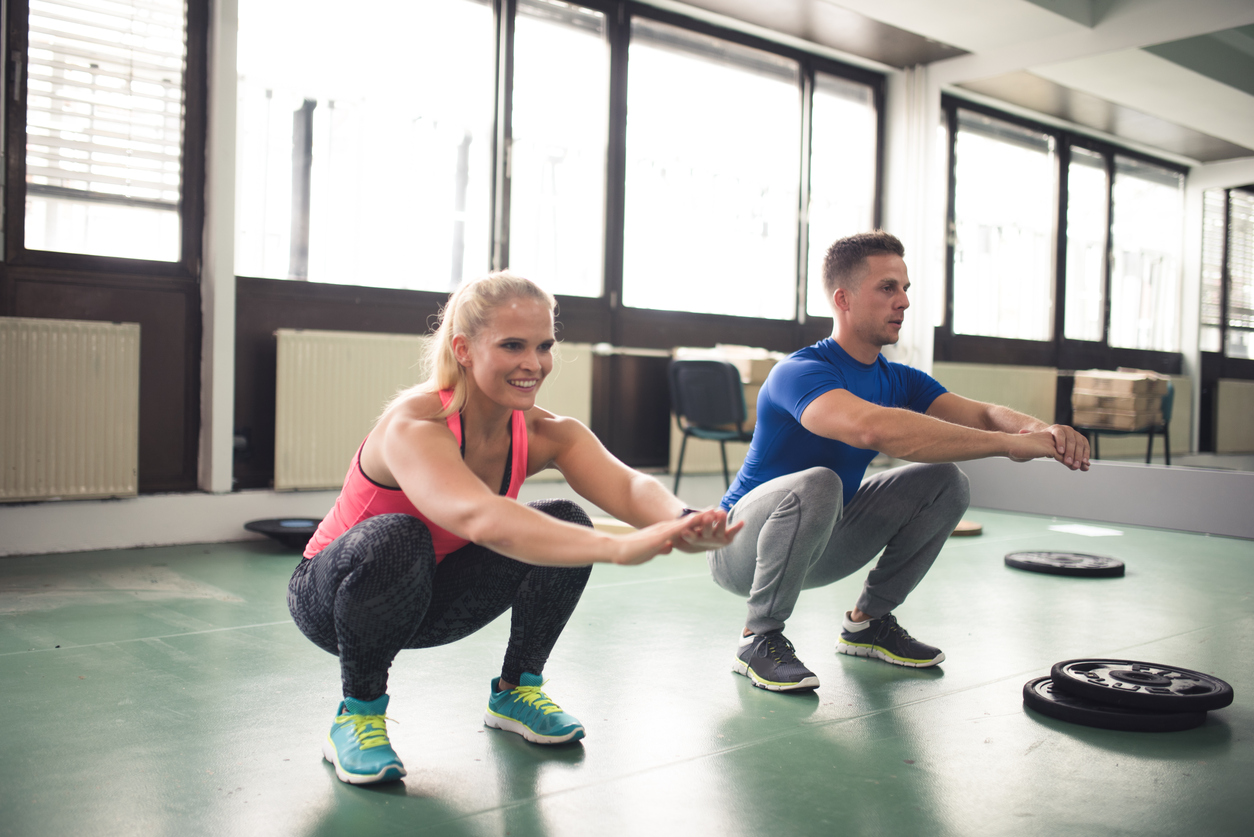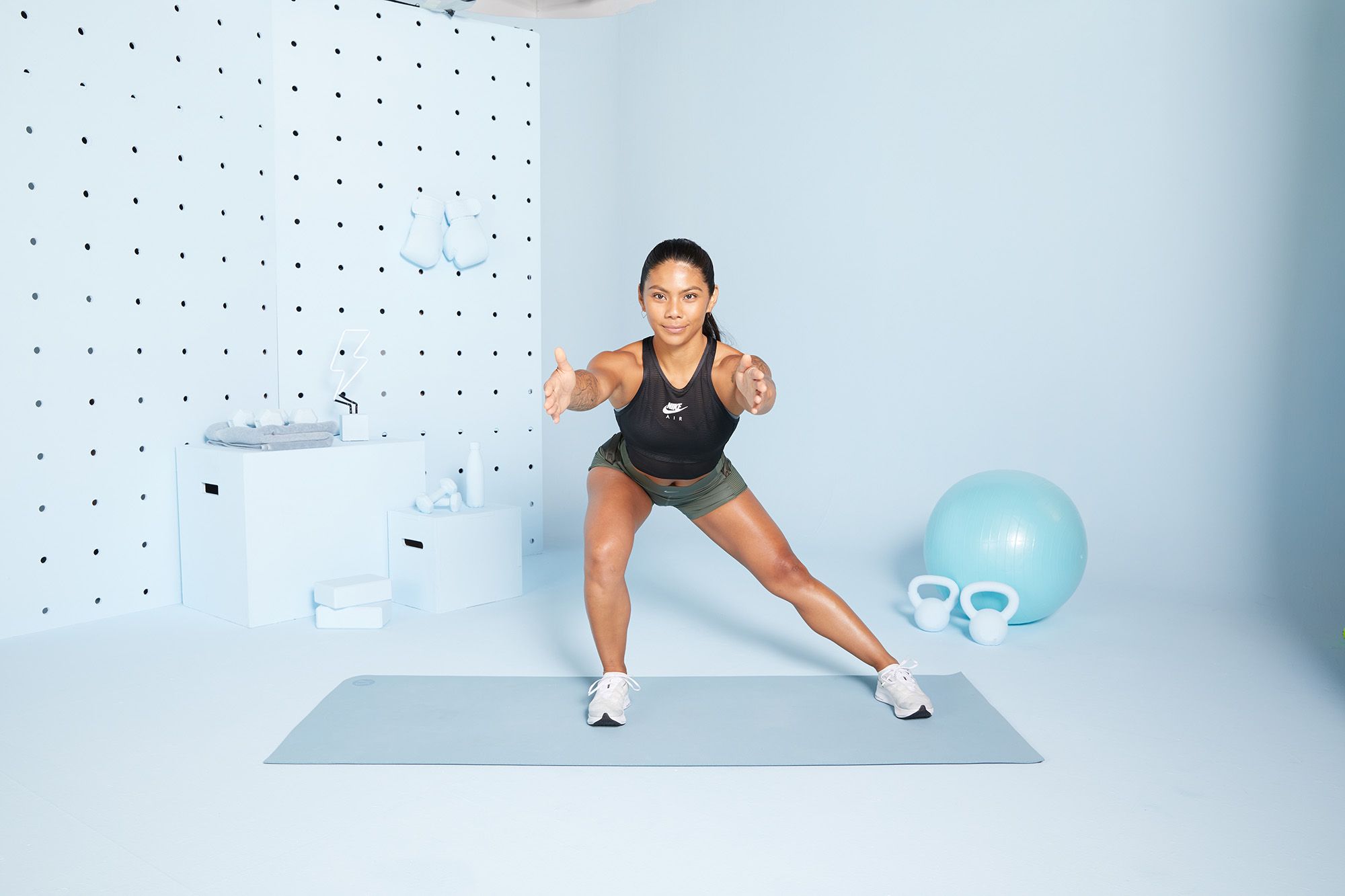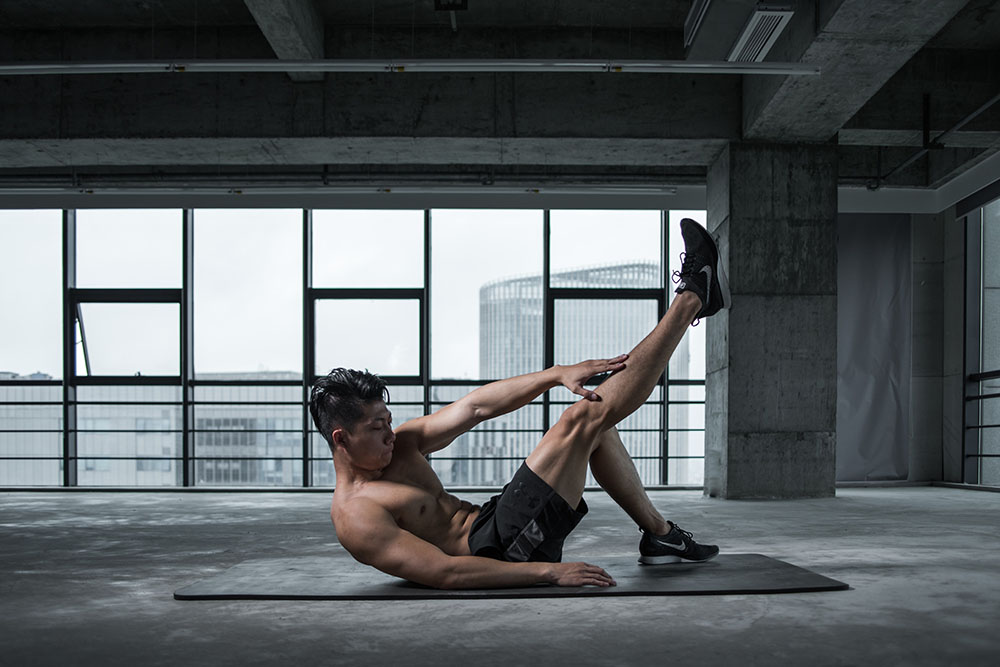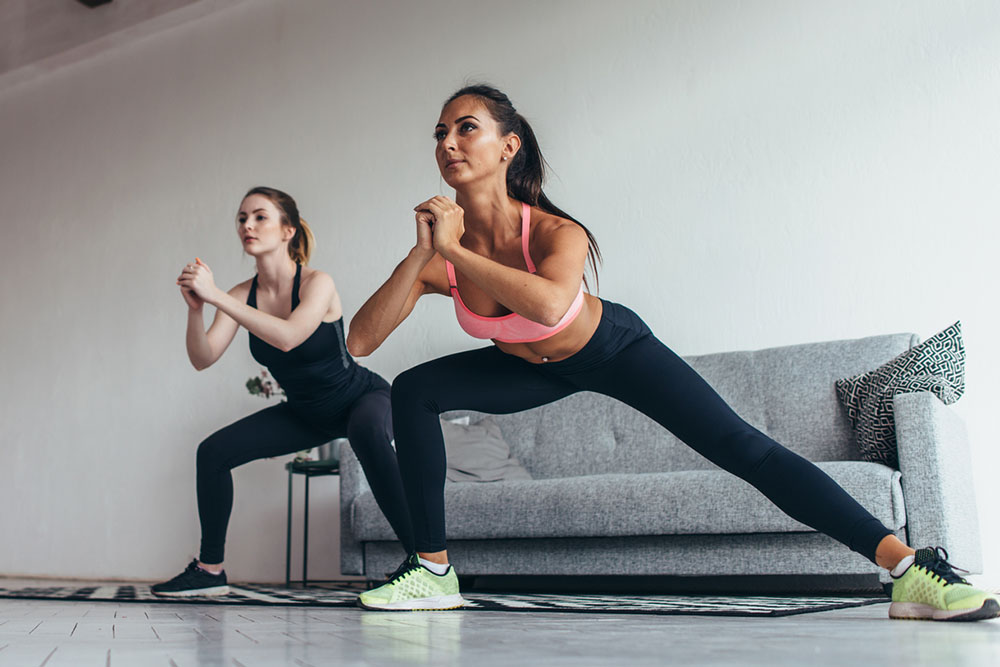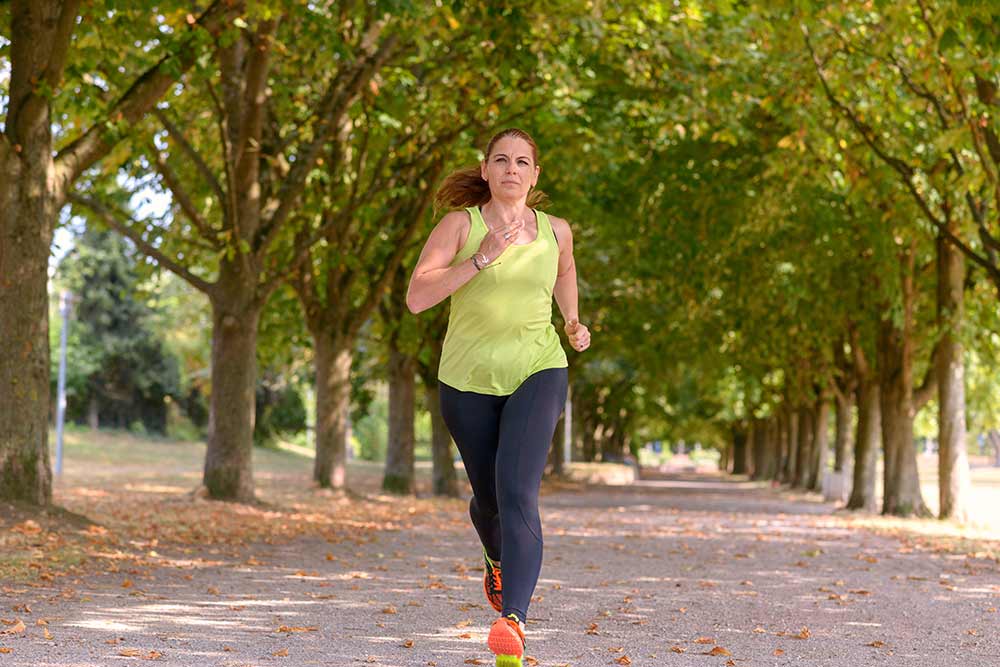What Is the Most Effective Squat Position?

Squats are often described as the king of all exercises – and for good reason too.
They not only train all the muscles of the lower body, but they also work the muscles of the upper back and core as well. This makes them one of the most effective exercises on the planet.
But many people fail to realise that how you perform them is also an important factor that needs consideration.
What are the benefits of squats?
I have alluded to them above, but squats offer a huge amount of benefit to pretty much anyone who can do them safely.
Squats place a significant amount of load through the muscle of the lower legs. Some of the squat muscles worked include the hamstrings, glutes, quads, and even calves. As a result, they are a great way to build size and strength in the lower body (Neitzel 2000).
Importantly, this alone can:
- Improve athletic performance (sprinting, jumping, and change of direction)
- Increase functional capacity (better ability to manage daily tasks)
- Prevent lower body sarcopenia
- Enhance metabolic health
Moreover, squats also help strengthen the muscles that support the upper back and spine. This means they can:
- Prevent lower back pain
- Improve posture
- Enhance shoulder health
Lastly, because squats also place a significant amount of axial load on the skeleton, they can help increase bone mineral density and prevent osteoporosis (Mosti 2013).
Seriously, what more could you want.
Different squat techniques
When it comes to squatting, there are really three main squat techniques that people adopt: the front squat, the high bar back squat, and the low bar back squat (Gullett 2009; Glassbrook 2017).
Front Squat
The front squat has the loaded barbell sitting on the front of the shoulders, rather than on the back. This increases the amount of work done by the abdominals to stabilise the spine, while encouraging a more upright torso.
As a result, this exercise places more load on the quadriceps than the two back squat variations, with less load on the hips and spinal erectors.
High Bar Back Squat
The high bar squat has the loaded barbell sitting on the shoulders, on the top of the traps. This results in a slight forward lean during the squatting motion that increases hip range of motion, while slightly reducing knee range of motion.
This variation generally has more load on the muscles of the posterior chain and spine than a front squat, but slightly less load on the quads.
Low Bar Back Squat
Lastly, the low bar squat has the loaded barbell sitting on the top of the posterior deltoids (just above the spine of the scapula), rather than on the traps. This results in a significant amount of forward lean during the squatting motion, which greatly increases hip range of motion and significantly reduces knee range of motion.
This variation generally places much more load on the muscles of the posterior chain and spine than other variations, and the least amount on the quads.
Different squats for different goals: the benefits
With the three different types of squats, there is also important acknowledge their unique benefits.
Front Squat Benefits
Given that front squats allow for a more upright torso, it is well accepted that they generally have better carryover to improved jump performance. This is because they replicate that activity more closely than either of the back squat variations.
They are also better for developing the quads because they allow for greater range of motion at the knee joint.
Importantly, if you are someone who struggles to squat deep during a back squat, front squats could be a great solution. Because of the increased abdominal engagement, they let most people sink lower into the squat easier.
This makes them an excellent option to teach – and improve – squat technique.
High Bar Back Squat Benefits
You can think of high bar squats as the perfect middle ground between front squats and low bar back squats.
Because they still offer a good amount of quad load, they are great for improving quad strength and jumping performance. However, as they also load the glutes, they improve sprint performance to a high degree as well.
Moreover, while they are more technically demanding than front squats, they are less technically demanding than low bar squats – making them great for intermediate trainees.
Low Bar Back Squat Benefits
Low bar back squats are the most technically demanding of the three variations. This is because you need to sit further back into the squat to achieve proper depth, while also maintaining a good torso position.
As a result, they are best suited to those who a serious about strength training and intend on moving as much weight as possible.
While they load the quads less than other variations, the increased movement at the hip means more load on the glutes and spinal erectors. As such, they also improve sprint performance to a notable degree.
One somewhat underrated benefit of the low bar squat is that they promote less forward knee travel than other squatting variations. While this is not relevant to most, it can make them a better option for people who suffer from knee pain.
Related Article: Glute Activation Warm-up and Exercise Performance
Correct squat stance
With all this in mind, we cannot NOT talk about squat stance.
One of the most common questions hat we get about correct squat technique relates to correct squat stance – and contrary to popular belief, there is no one “best way to squat”.
Instead, it needs to be tailored to the individual.
A good squat should achieve the following criteria:
- Crease of the hips descend below the top of the knee
- Spine remains neutral
- Weight remains evenly distributed between the ball and heel of the foot
If you are ticking these three boxes when you squat, then you are probably fine.
This doesn’t mean that there aren’t differences between a wide a narrow squat stance, because there are. Typically, wider squat stances increase load on the adductors and glutes, while narrower stances may increase load on the quads (Pali 2009).
However, some people cannot squat appropriately with a narrow foot position, while others cannot squat appropriately with a wide position – so these differences are often unimportant on an individual level.
With this in mind, it is imperative that you play around with your squat stance to find something that suits you as an individual.
We would suggest starting with a position where your feet are slightly wider than hip width, and with your toes pointed out slightly. Do a few reps here are see how it feels. Then creep your feet a little wider or narrower and repeat the process.
In essence, you are trying to find the position where you can descend into a deep squat as comfortably as possible.
And once you have found it, stick with this position – because it is the one that is best for you.
Tips for incorporating squats into your routine
With all this in mind, you are probably looking at how to best fit squats into your routine – and fortunately, it is not all that difficult.
We would suggest putting squats at the start of your workout. Because they are complex in nature, you should be performing them earlier in your session when you are at your most fresh.
Moreover, you should aim to train them twice per week to get the best results.
As with any weight training exercise, the following rep ranges will give you the best outcomes relative to your goals:
- 3-5 sets using heavy weights performed for low reps (1-6) for strength
- 3-5 sets using light weights performed as fast as possible for low reps (1-6) for power
- 3-4 sets using moderate weights performed for moderate reps (8-12) for muscle development
- 2-3 sets using light weights performed for high reps (12-30) for muscular endurance
And honestly, that’s it.
It is just a matter of getting into the gym and giving them a go.
Take Home Message
Squats are one of the most effective exercises on the planet. However, because there are several squat variations that you can implement, there are a few things you should consider before you put them in your program.
So, make sure you use this article as a guide to get the most out of your squats, and let us know if you have any questions in the comments below.
References:
Neitzel, Jennifer A., and George J. Davies. “The benefits and controversy of the parallel squat in strength training and rehabilitation.” Strength & Conditioning Journal 22.3 (2000): 30.
Mosti, Mats P., et al. “Maximal strength training in postmenopausal women with osteoporosis or osteopenia.” The Journal of Strength & Conditioning Research 27.10 (2013): 2879-2886.
Gullett, Jonathan C., et al. “A biomechanical comparison of back and front squats in healthy trained individuals.” The Journal of Strength & Conditioning Research 23.1 (2009): 284-292.
Glassbrook, Daniel J., et al. “A review of the biomechanical differences between the high-bar and low-bar back-squat.” The Journal of Strength & Conditioning Research 31.9 (2017): 2618-2634.
Paoli, Antonio, Giuseppe Marcolin, and Nicola Petrone. “The effect of stance width on the electromyographical activity of eight superficial thigh muscles during back squat with different bar loads.” The Journal of Strength & Conditioning Research 23.1 (2009): 246-250.
You Might Like:

